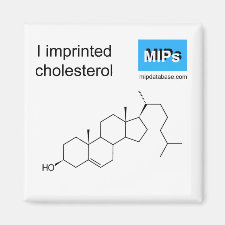
Authors: Shin MJ, Hong WH
Article Title: Sensing capability of molecularly imprinted self-assembled monolayer.
Publication date: 2011
Journal: Biochemical Engineering Journal
Volume: 54
Issue: (1)
Page numbers: 57-61.
DOI: 10.1016/j.bej.2011.01.008
Alternative URL: http://www.sciencedirect.com/science/article/B6V5N-523CDX0-1/2/50ea11cc4954c27f7ceb61e4d3713469
Abstract: A molecularly imprinted self-assembled monolayer (SAM) was fabricated on a gold plate by forming a monolayer with both 1-hexadecanethiol and the template molecule, and removing the template molecules by solvent extraction. Cholesterol, cholic acid, and deoxycholic acid were used as the template molecules. Cyclic voltammograms were obtained using these imprinted gold plates as a working electrode, with Ag/AgCl reference electrode and Pt counter electrode. Potassium ferricyanide was used as a background material for oxidation and reduction. These imprinted monolayers were capable of discriminating the substrate that had been imprinted. The stability of the imprinted monolayers was estimated precisely and the thickness change of the monolayer was estimated using quartz crystal microbalance (QCM). During repeated detection, 1-hexadecanethiol molecules on the gold plate were tightly adhered to the gold surface. However, the sensing ability was reduced with repeated detection, suggesting that these phenomena were due to the movement of hexadecanethiol molecules on the gold plate
Template and target information: cholesterol, cholic acid, deoxycholic acid
Author keywords: imprinting, self-assembled monolayer, cholesterol, Cyclic voltammogram, quartz crystal microbalance, sensor



Join the Society for Molecular Imprinting

New items RSS feed
Sign-up for e-mail updates:
Choose between receiving an occasional newsletter or more frequent e-mail alerts.
Click here to go to the sign-up page.
Is your name elemental or peptidic? Enter your name and find out by clicking either of the buttons below!
Other products you may like:
 MIPdatabase
MIPdatabase









